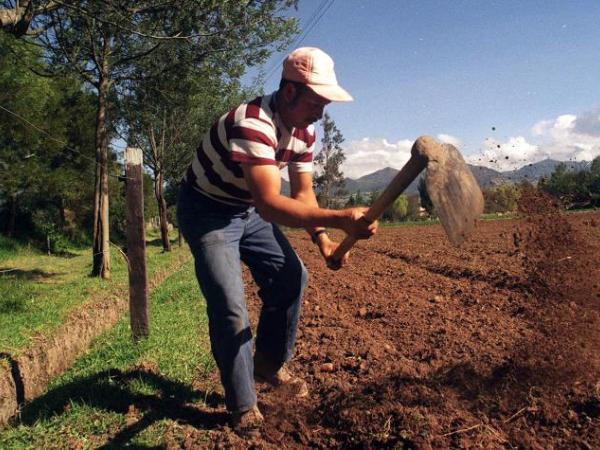Although the Gross Domestic Product (GDP) of the first quarter of the year grew 8.5%, and ten out of twelve sectors presented positive variations, In the case of agriculture, the panorama was not very encouraging. According to the report delivered this week by the National Administrative Department of Statistics (Dane) the sector presented a drop of -2.5%.
(Agricultural producers do not feel lower tariffs on their costs).
The director of Dane, Juan Daniel Oviedo, assured that one of the reasons was in the rice sector, which presented a contraction of -32.9% in the first quarter of the year due to the fact that in the second half of 2021 there was an accumulation of inventories, but, for the first quarter of 2022, the decumulation of said inventory was what generated the contraction in the sector.
(Modernization of agriculture, key axis for the presidential elections).
Faced with this, the manager of the National Federation of Rice Growers (Fedearroz), Rafael Hernández, said that rice was the sector that contributed the least to the growth of the sectoral GDP, Well, 2021 began with 1.1 million tons in inventory, which meant the decrease in the rice sector.
Regarding 2022, “the price has increased because the inventory in April was around 680,000 tons and it is expected that by June 30 it will reach 250,000 tons, which represents the consumption of a month,” said the union leader.
In the case of the coffee sector, according to Oviedo, there was a constant trend of contraction in value added for the first quarter of 2022 of -19%, showing that by 2021 there was a production of 4.41 million bags of parchment coffee, but by 2022 there was evidence of a production of only 3.67 million bags of coffee.
Given the results presented by Dane, the National Federation of Coffee Growers (Fedecafé), states that production has decreased this year due to the effects of the weather without having the expected production of each year, given the need for more sun for the crops. Regarding the livestock sector, according to Dane, there was a change in trend of -0.7%, due to a lower demand in domestic consumption cattle due to higher prices and production.
However, according to the statistical authority, a compensatory dynamic was also reflected with pigs, which presented a growth of 9.3% due to the substitution of proteins between beef, which has had growth in the IPP and the IPC, and pork which had a significant compensation.
For the president of the National Federation of Livestock Farmers (Fedegan), José Felix Lafaurie, the publication of GDP data on livestock represents “a worrying situation, considering that although per capita consumption has not decreased, the focus of the problem is separated in the slaughter of clandestine cattle”.
For Lafaurie, a phenomenon that has spread throughout the country must be stopped, where a significant part of what reaches the consumer is the product of clandestine slaughter, applying the “meat” modality, where the beef is slaughtered in the paddock and is taken directly to local markets, affecting Colombian livestock.
POSITIVE DYNAMICS
Now, despite the negative results in some agricultural sectors presented by the Dane, other categories such as floriculture, forestry, fishing and palm, presented positive results compared to the other sectors.
According to Juan Daniel Oviedo, in the case of forestry, an agricultural activity that is based on the use of forests and the extraction of wood, it reached a growth of 80.8% in the first quarter of 2022 compared to the quarter of 2021 where it reached 47.2%.
According to Oviedo, this growth reflects that the return to attendance generated a greater demand for paper by different sectors such as: education and business.
Regarding fishing and aquaculture, despite the fact that in 2021 it obtained a variation of 39.8%, in the last days of 2022 there was a greater demand for fish for Easter, which led to a lower result. compared to the previous year. But, in any case, it is positive for the sector, with 11.4%.
In the case of floriculture, there was a growth of 12% and the palm fruit achieved a growth of 11.9% for the first quarter of 2022.
DIANA K. RODRÍGUEZ T. AND LAURA LUCIA BECERRA ELEJALDE
BRIEFCASE







